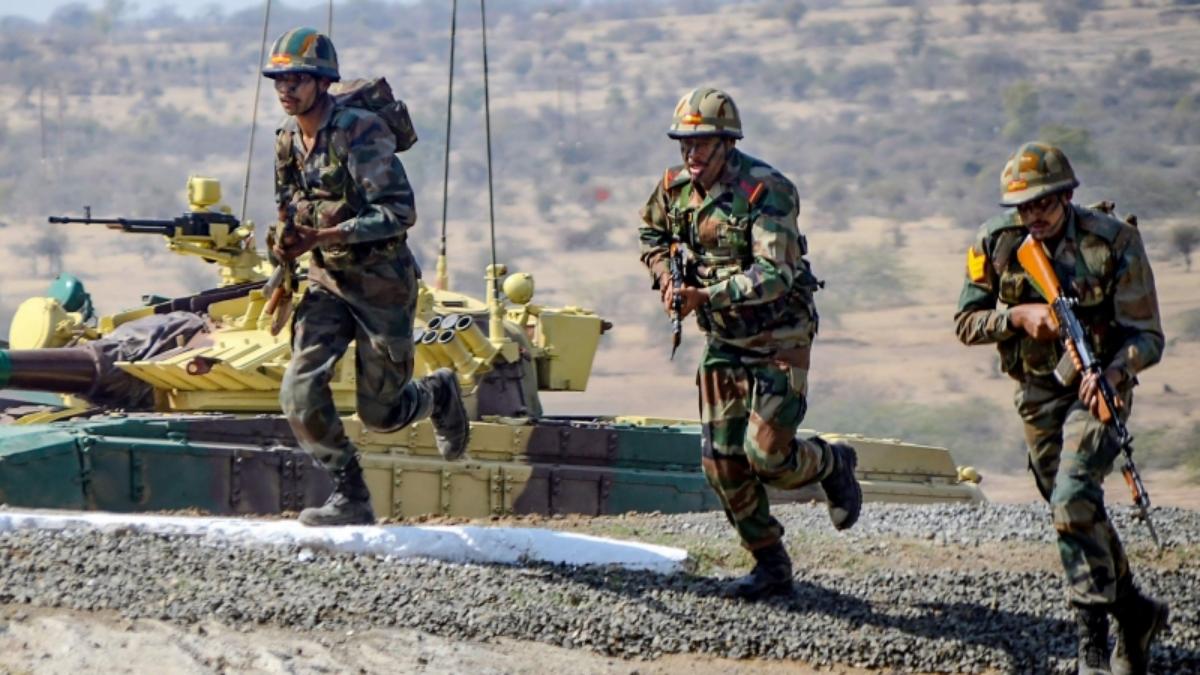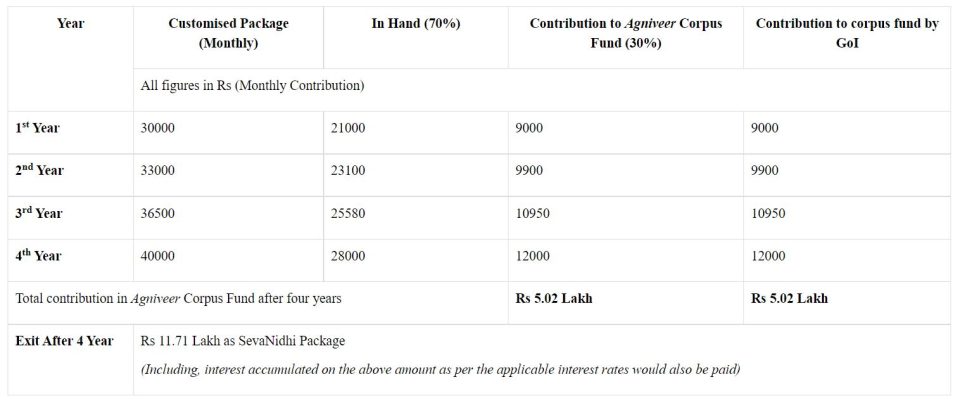
Agnipath scheme decoded: How to join, salary, benefits — and criticism

The Union Cabinet on Tuesday (June 14) approved a recruitment scheme for Indian youth, both boys and girls, to serve the Armed Forces.
The scheme is called ‘Agnipath’ and the youth selected under this scheme will be known as Agniveers.
“Agnipath allows patriotic and motivated youth to serve in the armed forces for a period of four years,” the Ministry of Defence said.
The Federal presents to you a complete guide on the ‘Agnipath’ scheme, views from defence veterans, Opposition, and why there are protests against it.
Agnipath scheme and its benefits
Under the scheme, the Agniveers will be enrolled in the forces under respective Service Acts for a period of four years.
Those in the age group of 17.5 to 21 years can join the scheme.
Also read: No state provided 100 days of work under MGNREGA in FY22: Govt data
On completion of the service period, they will receive a tax-free service fund package of ₹11.71 lakh.
Up to 25% of each specific batch of Agniveers will be enrolled in regular cadre of the armed forces.
After their four-year stint, Agniveers will be paid a one-time ‘SevaNidhi’ package which shall comprise their contribution, including accrued interest thereon and matching contribution from the government equal to the accumulated amount of their contribution including interest.
The ‘Seva Nidhi’ will be exempt from Income Tax.

There shall be no entitlement to gratuity and pensionary benefits.
Agniveers will be provided non-contributory Life Insurance Cover of ₹48 lakh for the duration of their engagement period in the Indian Armed Forces.
Certificate for Agniveers
The Agniveers will be imparted with various military skills and experience, discipline, physical fitness, leadership qualities, courage and patriotism.
Post the stint of four years, the Agniveers will be infused into the civil society.
The skills gained by each Agniveer will be recognised in a certificate to form part of his unique resume.
The individuals, selected for enrolment in the Armed Forces as regular cadre, would be required to serve for a further engagement period of minimum 15 years and would be governed by the existing terms and conditions of service of Junior Commissioned Officers/Other Ranks in Indian Army and their equivalent in Indian Navy and Indian Air Force and that of Non Combatant enrolled in the Indian Air Force, as amended from time-to-time.
They would form a distinct rank in the armed forces, different from any other existing ranks.
Upon the completion of four years of service, based on organisational requirement and policies promulgated by the Armed forces from time to time, Agniveers will be offered an opportunity to apply for permanent enrolment in the armed forces.
Selection process
These applications will be considered in a centralised manner based on objective criteria, including performance during their four-year engagement period.
The selection will be the exclusive jurisdiction of the Armed Forces.
Enrolment will be undertaken through an online centralised system for all three services – Army, Navy, Air Force, with specialised rallies and campus interviews from recognised technical institutes such as Industrial Training Institutes and National Skills Qualifications Framework, among others.
Enrolment will be based on ‘All India All Class’ basis and the eligible age will be in range from 17.5 to 21 years.
Agniveers will meet the medical eligibility conditions laid down for enrolment in the armed forces as applicable to respective categories/trades.
The educational qualification for Agniveers will remain as in vogue for enrolment in various categories. (For example: For entry into General Duty (GD) soldier, the educational qualification is Class 10).
Opposition finds fault in scheme
The Congress slammed the BJP over the Agnipath scheme. There were protests by Army aspirants in states like Bihar.
“When India faces threats on two fronts, the Agnipath scheme reduces the operational effectiveness of our Armed Forces. The BJP government must stop compromising the dignity, traditions, valour and discipline of our forces,” said Congress leader Rahul Gandhi.
Also read: Protests in Bihar against Agnipath; job aspirants block highway, rail tracks
Congress general secretary Priyanka Gandhi Vadra said the BJP government was making army recruitment a “laboratory”.
“Why is the BJP government making army recruitment its laboratory? The long jobs of soldiers are finding the government a burden? The youth are saying that this 4-year rule is a hoax. Our ex-servicemen also disagree with this. No discussion, no serious thinking on the sensitive issue related to army recruitment. Just arbitrary?” Priyanka tweeted.
Protests broke out in Bihar’s Muzaffarpur and Buxar.
The protesters asked what they would do after four years. Gulshan Kumar from Bihar told a channel, “Merely four years of service will mean we will have to study for other jobs after that, and be left behind others our age.”
“I have been running and preparing myself physically for two years now. Will I now take up a job that’s just for four years?” another aspirant Shivam Kumar said.
What did Army veterans say?
Maj Gen (retd) Ajay Seth critical of the scheme. “Let’s not create an irreversible and avoidable turmoil and turbulence, with two adversaries conjoined to trouble us,” he said. It should have been implemented at a smaller scale and when found suitable, only then should have been implemented, Seth was quoted as saying by Indian Express.
Major General Ashok Kumar backed the move. “This scheme is transformational and will benefit both the Armed Forces and the country in an asymmetrical manner. It will bring down the current age profile of the frontline units from 32 years at present to 26 years in four-six years’ time. Since the retention will be only 25% of the intake, there will be a qualitative upgrade of the unit’s profile,” Kumar was quoted by the newspaper.

